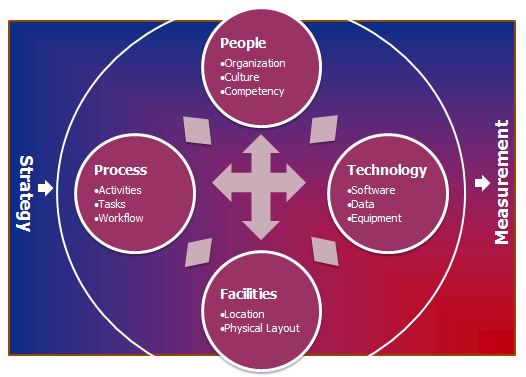Building Law Firm Capabilities
Introduction
The Chief Knowledge Officer at a top firm recently asked me why I thought the same topics come up every year at legal conferences and in legal publications – alternative fee arrangements (AFAs), legal project management, legal process outsourcing, etc. His implication was that firms must not be successfully adopting these new concepts on their first try. I am convinced that these are all worthy efforts, and necessary for firms to transform themselves. However, unaccustomed to implementing changes in how they work, law firms vastly underestimate their complexity, and address them in ways that are overly narrow and completely insufficient.
The projects listed above, along with most large-scale change initiatives, are attempts to build or improve a firm’s capabilities. Firms need to recognize that capability building is complex, multi-faceted, and challenging. Attempts to do it “on the cheap” invariably fail.
In this article, I introduce the concept of a capability as it applies to law firms, and use a capability blueprint to illustrate the many elements that must be considered in order to deliver a successful change. The capability blueprint is a very useful tool in all phases of a change effort, supporting analysis, planning, implementation, and measurement.
Capabilities Defined
Broadly, capabilities are those things that an organization must do well to execute on its strategy. Leading companies can point to those exceptional capabilities that provide their competitive advantage, such as marketing for Proctor and Gamble or supply chain management for Wal-Mart. But all organizations possess collections of capabilities, large and small, that enable them to succeed. For law firms, the ability to deliver high-quality legal services is clearly of paramount importance. However, at the more detailed level, there are a host of capabilities that firms may seek to maximize, such as:
- The ability to attract, develop, and retain attorneys and staff
- The ability to manage firm knowledge and expertise
- The ability to market services and develop new business
- The ability to manage risk and prevent conflicts
For each capability, a firm could determine its importance to providing competitive advantage, assess its level of maturity, and identify changes that would contribute to firm strategy. When doing so, it is necessary to understand the building blocks of a capability and how they influence each other. That is the purpose of a Capability Blueprint.
The Capability Blueprint
Capabilities, like the organizations they support, can be thought of as systems with multiple interconnected parts. We represent those parts through a capability blueprint. The figure below is a template that my firm uses to build a capability blueprint. The blueprint allows you to identify and document everything that needs to be in place for a capability to be built, including:
- Strategy – elements associated with a firm’s strategic goals, such as target customers, delivery channels, practice areas, pricing, and sourcing
- People – elements associated with human performance such as culture (norms, values, behaviors and motivations), organization (jobs, roles, and reporting relationships), and competency (aptitude, skills, and knowledge)
- Facilities – the location and physical layout of the workplace(s)
- Process – activities, tasks, and workflows
- Technology – including software, hardware, data, and equipment
- Measurement – ways to assess performance, including business performance, organizational performance, and human performance
 HardingLowe’s Capability Blueprint
HardingLowe’s Capability Blueprint
Efforts to build a particular capability may not involve all of these elements. However, it is still worthwhile consider each, as the absence of a critical element can derail a change project. Some illustrations from law firm projects that you have probably experienced are:
- Legal Project Management – firms attempt to build a legal project management capability by offering workshops to attorneys. This is an attempt to build Competency, expecting that to be sufficient. It rarely is. Successful project management must be supported by software, data, processes, and culture.
- Alternative Fees – firms introduce AFA tracking tools or an AFA oversight process, without changing measurement. They continue measuring attorneys on their billable hours, which is incongruent with fixed fee arrangements.
- Customer Relationship Management – Firms implement CRM software (e.g. InterAction) to leverage the contacts of attorneys, but fail to put in place the processes or organizations necessary to maintain data quality. They end up with a system that no one trusts.
Interestingly, it is usually when firms need to build a capability from scratch that they tend to be more successful. I think this is because starting with a blank slate forces them to be comprehensive and think through the entire change. Examples include when firms open low-cost service centers or when they develop entirely new market offerings like an eDiscovery unit.
Conclusion
It is tempting to believe that a modest change, like a new technology or attorney training, will be sufficient to spark a change in an organization. I have no doubt that technology vendors contribute to the problem by claiming that their products are “turn-key” solutions that merely need to be plugged in. Unfortunately, experience dictates otherwise. When firm leadership identifies the need for a change, start by identifying and characterizing the capability that requires improvement, and employ a capability blueprint to support a change effort that is successful the first time you implement it.
Michael Lowe is the President of HardingLowe (www.hardinglowe.com), management consultants to law firms. He can be reached at: mike.lowe@hardinglowe.com
